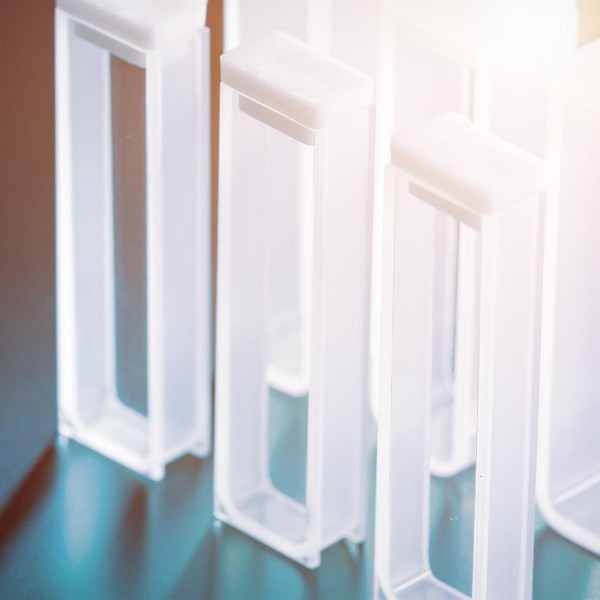- New








Hey, We are upgrading the site, if you are facing issues kindly write us: info@shilpent.com
Hey, We are upgrading the site, if you are facing issues kindly write us: info@shilpent.com
A quartz cuvette is a tiny, transparent, rectangular container with various dimensions, materials, and quality requirements. It is a clear, transparent container made of plastic, glass, or fused quartz with straight sides and a circular or square cross-section. It is sealed at one end. Liquid samples are placed inside it for spectroscopic measurements, which involve passing a light beam through the sample to determine its absorbance, transmittance, fluorescence intensity, fluorescence polarization, and fluorescence lifetime. Because quartz is so transparent in the ultraviolet as well as in the visible regions of the electromagnetic spectrum, it can be used to evaluate samples with repeatable results and under a variety of temperature conditions.
Moreover, quartz is resistant to a wide variety of common solvents and chemicals and is chemically inert, allowing for repeatable measurements without cuvette degradation. Because quartz is a sturdy and hard material, handling and cleaning will not likely scratch or harm it. Two-sided transparent and four-sided transparent cuvettes are the two main varieties. Compared to the two side transparent cuvettes, the four-sided cuvette is relatively expensive. It is helpful for studies involving fluorescence and absorbance in the UV, VIS, and NIR.
It can be assembled with or without glue by heating the quartz glass to a high temperature and then applying pressure to fuse the pieces. It comes in various volumes, ranging from 100 µL to 3500 µL.
Quartz cuvette is used in UV spectroscopy, and hence, it is useful for studies on fluorescence and UV, VIS, and NIR absorbance. It is also useful in conducting measurements repeatedly without being hindered by cuvette deterioration. Quartz cuvettes also help in taking precise measurements in a variety of temperature settings and ensure repeatable results when assessing samples. Because quartz is a sturdy and hard material, handling and cleaning will not likely scratch or damage it. Since synthetic quartz doesn't exhibit background fluorescence, it can be used in deep UV applications. It is advised for fluorescent applications. Mechanical stressing of cuvettes used in circular dichroism experiments is never recommended because it can cause birefringence in the quartz and skew measurements.
With over a decade of experience, Shilpa Enterprises is a leading manufacturer and supplier of superior alumina boats to a worldwide clientele. We provide various options for the customization of quartz cuvette. We meet our client's particular production needs.
Our primary focus is quality, and we provide competitive prices and customization choices for large orders. Our dedication to providing high-quality products and guaranteeing customer satisfaction makes us proud.
Reach out to us right now for alluring offers!
No customer reviews for the moment.